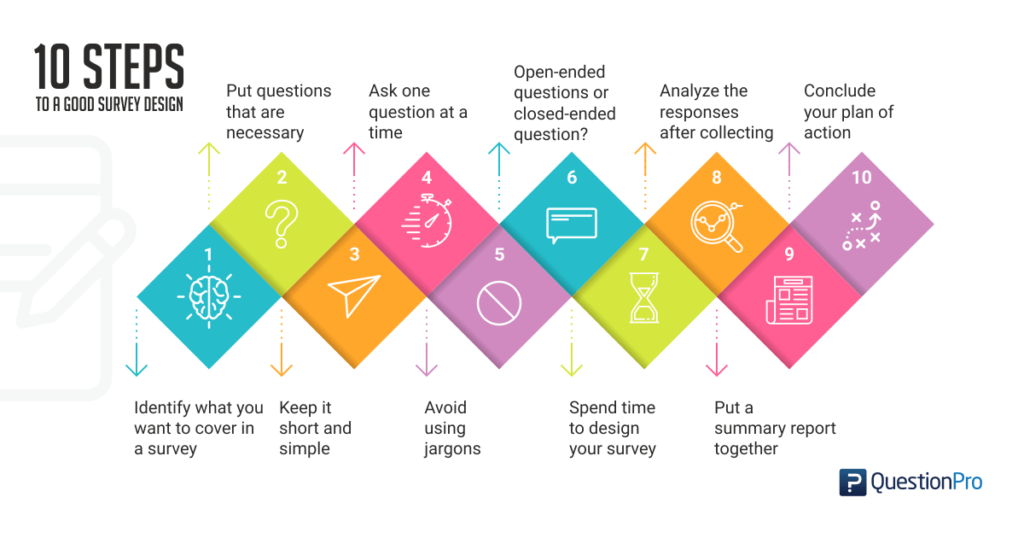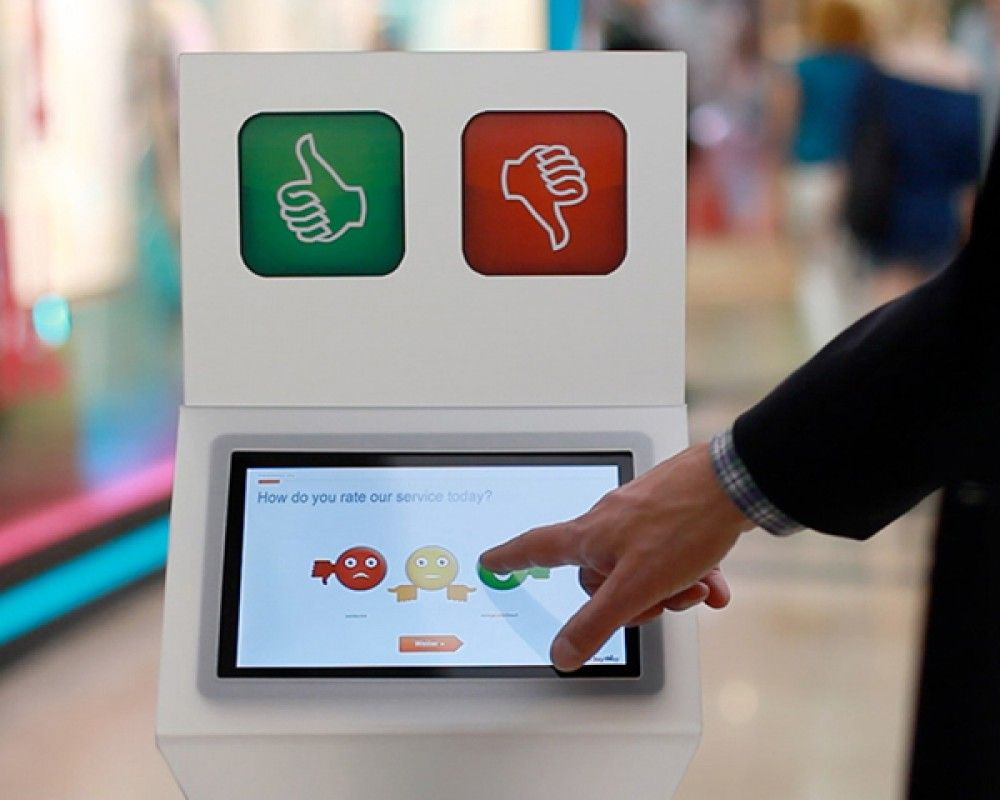
Irrespective of whether you are conducting employee evaluations, collating customer feedback, or planning your next ad campaign, the foremost step towards formulating an effective survey is to brush up on designing a survey and getting the fundamental survey science right. What does a good survey research design look like? What are some excellent survey forms and survey designs and the best practices for survey design? Let us dive deeper into it in this article!
Companies conduct surveys to determine what consumers think and feel about their brands. Their survey design practices are constantly reviewed. A brand might want to know what the customer satisfaction score is for a newly-launched product or simply try to assess if their latest marketing or advertising campaign was successful the way they expected it to be. Alternatively, it could be an internal survey where the brands survey their employees to gain information about their time with the company.
Whether you are conducting employee evaluations, collating customer feedback, or planning your next ad campaign, the foremost step towards formulating an effective survey is to brush up on designing a survey and getting the basic survey science right.

What is Survey Design?
A survey aims to get maximum insights to answer a problem statement or achieve a goal. The process of creating such effective surveys is called survey design. A survey research design can help organizations understand new trends, analyze market demand conditions, collate opinions from their customers, etc. It is an essential process of collecting information that can be translated into important insights for the company.

Why is Designing a Good Survey Essential?
When a company or a brand conducts a survey, a significant amount of time is spent understanding best practices for survey design. The information obtained through it is important to drive certain business decisions that can impact the company’s future.
Therefore, it is crucial to collect this information through a carefully designed survey, and using a reliable survey builder tool can make the research much more productive and effective than a casually conducted survey. This makes a good survey design important for any business
What Are Different Types of In-Person Surveys?
1. Telephonic surveys
These surveys are often conducted when the company has its customer data. An agency is hired to ask a set of questions to these consumers and record responses. These surveys are also followed after service calls and involve pressing certain digits on your phone to record responses to know how satisfactory the service was. When it comes to recording responses for a problem statement like ‘Was our last ad campaign effective?’, this is not a go-to method as most people refuse to take these surveys or do not attend the call.
2. Online surveys
In the modern era of the internet and social media, these are the most common types of surveys and the most effective ones. With many online survey tool available for creating survey links, it is easy for any individual or organization to create one and float the link on their social media handles. The internet also makes it easy to reach a broad audience in a limited period. The ease of choosing demographics is also a benefit of these surveys.
3. Kiosk surveys
Such surveys can be found on computer screens at physical locations like hotels, malls, hospitals, airports, or restaurants. Almost every industry today places a high priority on service, so kiosk surveys are often used to assess how satisfied the customers are with the service at that particular location.
One of the significant benefits of these surveys is that they record responses while the customer has just had an experience and its memory is very fresh in his mind. This makes the responses more trustworthy.

4. Interviews/in-person surveys
These surveys are also known as in-person surveys or household surveys. When it comes to remote areas where people do not have access to the internet, these surveys come in handy. Researchers often prefer these interviews as they involve face-to-face interviews with people and are beneficial for recording respondents’ behavioral aspects.
These interviews are often recorded on camera to make it easy for the interviewer to assess them later. This can help interviewers gauge the authenticity of the answers by analyzing facial expressions, tone, hand movements, and other softer aspects of the respondent. Such interviews are also seen during government surveys about their schemes, elections, etc., and involve door-to-door interviews by the government people.

Six Tips For Designing a Survey
1. Be clear on what you want to achieve with the survey
Setting a goal before designing a survey comes in handy, and all your questions must be aligned with that goal. Drafting a problem statement can also help analyze the survey later to arrive at a business decision.
2. Have clear questions
A well-worded survey is key to getting genuine responses. If a question does not define clarity, it should be accompanied by pictures or videos to clarify any confusion.
3. Know your demographics
It is often helpful to divide the respondents based on demographics like age, gender, professions, or even location. Based on your consumer demographic segment, the responses will be highly focused on your actual potential users, which will help get focused questions.
4. Sequence your questions correctly
To engage respondents better, your survey should look like a conversation. A team can help improve the survey course. The structure of your survey should be easy to understand and progressive from general to specific questions. In other words, the flow of questions should be logical.
5. Answer choices should not be confusing
It is better to include extreme responses in the survey rather than confusing ones like “Yes/No” or “Agree/Disagree” rather than “maybe/almost. The reactions captured must give you a clear direction of what the respondent meant. Also, especially in the case of longer surveys, it is better to avoid subjective questions and stick to objective ones to make data analysis easier.
6. Preview/test your survey before floating it
You can conduct a dry run on a group of customers or internal employees to catch any errors and use the feedback to improve your survey.
Surveys are important for many reasons for any business or organization. They can help researchers find solutions to existing business problems, create discussions, and generate ideas for future implementation. So, it is crucial to take the drafting of these surveys seriously to drive logical conclusions to the problem at hand. Time invested in drafting a survey can save the time needed for implementing business decisions.

FAQs
Surveys can be offline, online, or telephonic. The type depends on the location, time, problem statement, etc., and should be chosen carefully.
1. Set clear goals
2. Have clear questions
3. Use video/images for better comprehension
4. Know your demographics
5. Sequence your questions aptly
6. Answer choices should not be confusing
7. Have a preview or test run before finalizing the surve
An effective survey design provides a good balance between the client’s informational needs and the willingness of a respondent to share their opinions.
1. Telephonic surveys
2. Online surveys
3. Kiosk surveys
4. In-person interviews or household surveys
Surveys are used to gather or gain knowledge in social research and demography. Survey research is often used to assess thoughts, opinions, and feelings.
A survey form design is a process of creating surveys to receive maximum insights from survey research and using an online survey tool to design a survey from scratch or using ready-made survey templates.
A descriptive survey research design study describes the characteristics of a population or phenomenon. This methodology focuses more on the “what” than the “why” of the research. It is primarily concerned with describing the nature of a demographic segment rather than explaining “why” some phenomena occur. This means it only “describes” the subject of the research without explaining the “why.” behind it.
Latest Blogs
Explore how Google’s 2025 AI search updates triggered ranking chaos. Learn actionable strategies to adapt your SEO for AI Overviews, zero-click searches, and SERP volatility. Stay ahead now.
Learn how to rank on AI search engines like ChatGPT, Perplexity, and Gemini by optimizing your content for authority, structure, and relevance. Stay ahead in AI-driven search with this strategic guide.
Explore the best healthcare SEO services for your medical practice. Improve online visibility and effectively reach more patients in need of your services.
Get your hands on the latest news!
Similar Posts

Design
7 mins read
15 Best Firms Offering Design Services in India

Design
5 mins read
All You Need to Know About Data-Driven Design

Design
6 mins read